from dream to handmade biz
Lesson 4 – understanding your market
lesson outline
How big is your market?
The pinterest test
The Google keyword tool test
The Instagram # test
Spotting hot trends
Restrictions and regulations
What about the competition?
lesson resources
lesson checklist
- I have a good idea of the size of my market (refer to the Pinterest, Google and Instagram tests);
- I have defined trends and changes in demand for my products over the year (seasonality). I know to take this into account to plan my marketing accordingly;
- I am aware of any regulations or restrictions that might apply to my products;
- I have completed my ‘competition’ cheat sheet.
need more help?
check out tizzit hq

WHEN YOU BECOME A MEMBER, YOU GET ACCESS TO:
- The 4-stage Maker’s Roadmap system: an interactive, step-by-step guide to all the fundamental steps you need to take (and in what order!) to build a successful handmade shop
- 20+ in-depth courses and guest expert workshops (and more added monthly!)
Live Monthly Q&A Sessions - A friendly and supporting community of like-minded makers for you to connect with and get feedback from
- And so much more: accountability, quick wins videos and tutorials, workbooks and checklists, etc.
How big is your market?
Although having an exact number of potential customers in your market is NOT the goal here (phew! what a relief right?), it is useful to have an idea of how big your market is. Sometimes we think that there are a lot of people interested in our products only to realize that there’s not enough to sustain a successful business.
“But, how do I know?” – you’re wondering.
Well, some cases are more obvious than others. If you’re planning on selling handmade soap or candles, I think we can all instinctively (and pretty accurately) say that there is a demand for it. A lot of competition too, but there’s definitely people ready to buy these products. Now if you want to start a shop that sells handmade bow ties, the answer might not be as obvious. In this case, here are a few tips and tricks:
The google keyword planner tool test
Have you heard of the Google keyword planner tool? If not, go and sign up for a google Adwords account right away. Seriously, do it. It’s forever free and a must-have tool to gain insights into your market, competitors, and more. Once you have your account, find the keyword tool and select “search for new keywords using a phrase…”.
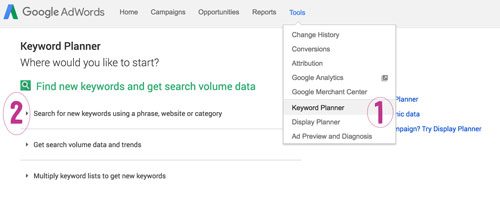
Now, type in your main keyword (in our example: bow tie) and if you need to, select a location (if you only plan on selling to the US for example) and let Google do the rest:
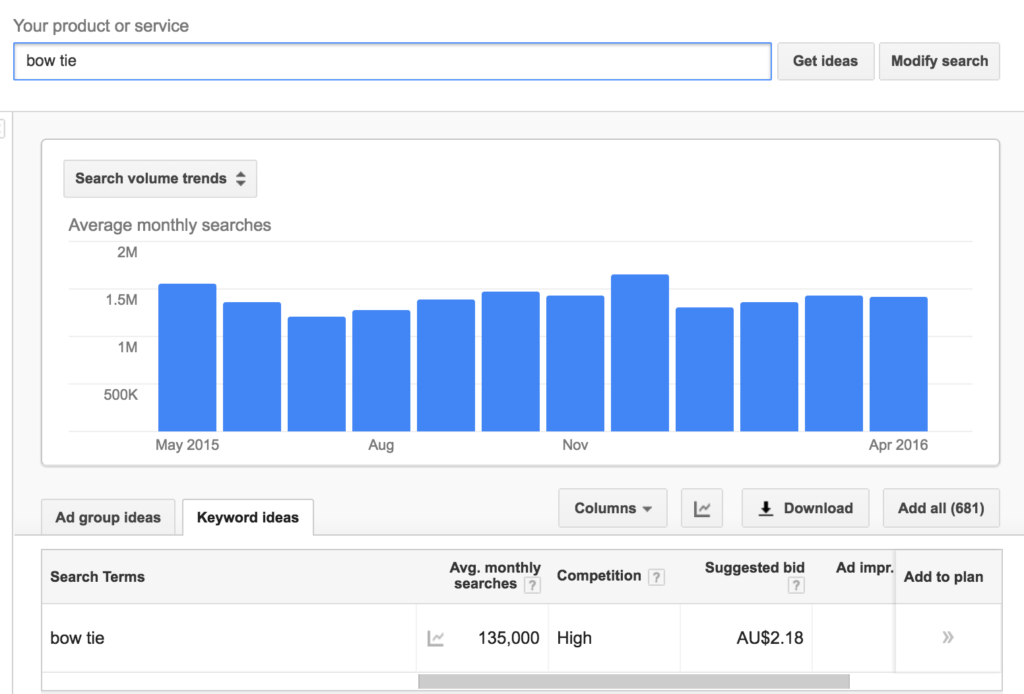
Now, type in your main keyword (in our case: bow tie) and if you need to, select a location (if you only plan on selling to the US for example) and let Google do the rest:
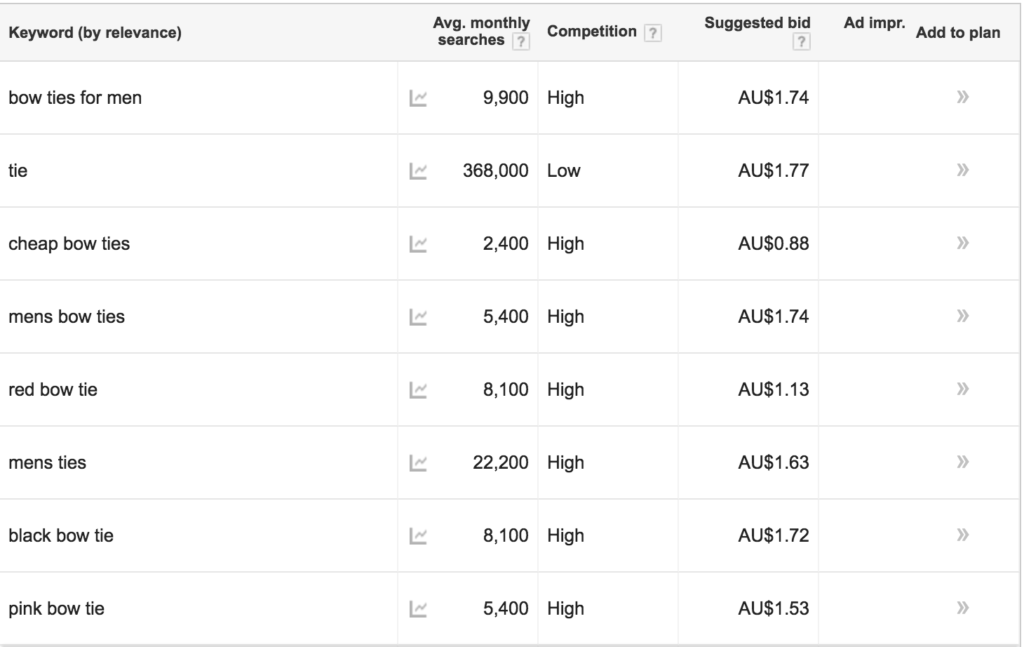
To go even further, search for niched down keywords such as “wedding bow tie”, “black bow tie”, “boys bow tie”, etc. You can also look at related terms such as “tie” or “wedding ties”, etc.
The Instagram # test
The last test is all about hashtags. Hashtags are a great way to measure engagement for your product idea. If you go on your Instagram and search for your keyword under “hashtag” you should see a list of related hashtags and for each the number of times it’s been used. In our “bow tie” example:
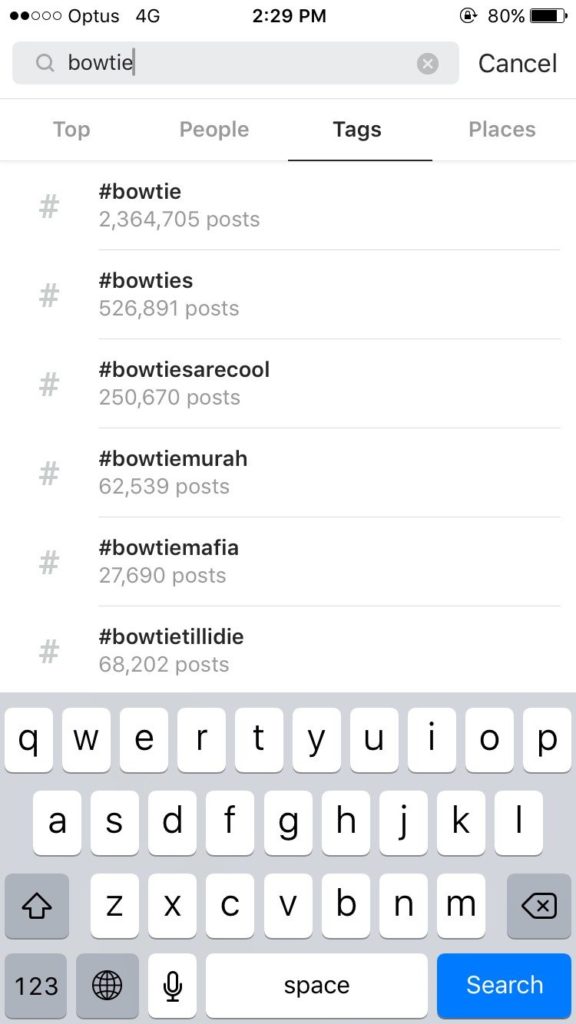
Remember, don’t feel like you have to get exact data and know-it-all. Trusting your guts is an important part of starting a business! You will gain more insights as you enter that market and grow your shop. As long as you’re not hitting any “red flags” (Eg: if no one seemed to talk about #bowties) trust your guts!
THE etsy TEST
Even if you plan to sell on the Etsy platform, it is a great way to get an idea of how crowded/uncrowded your market is:
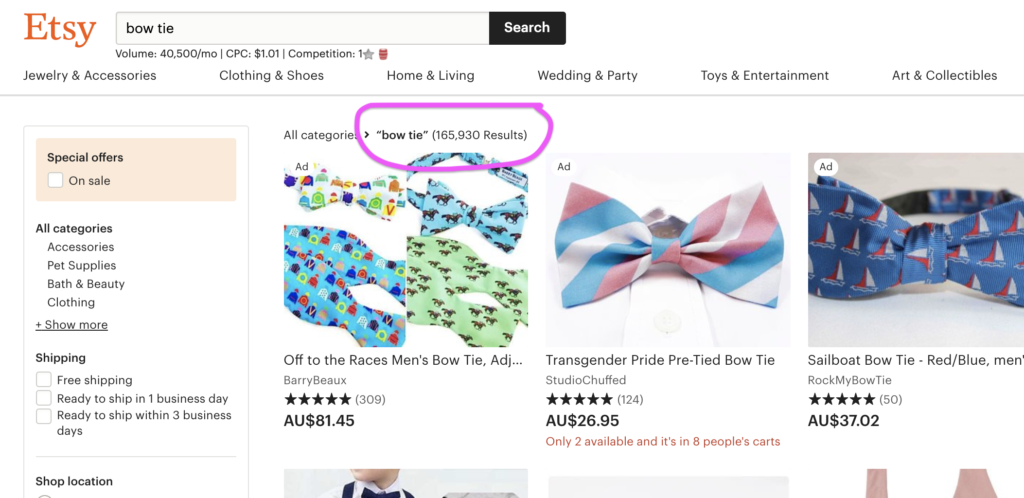
Spotting hot trends
Next, you want to look into your market trends to see if you can spot a peak in popularity (a sudden craze) or a more long-lasting market trend. This is also a great way to notice trends during the year (seasonality) so you can prepare yourself better when there is peak in demand (Eg.: mother’s day? Father’s day? Christmas? Easter? etc.). To do so, we head over to Google Trends. And then it’s easy peezy: type in your main keyword and wait for the graph to show up. For our example, this is what I got:
Looking at the graph, we can safely assume that bow ties have gained popularity in the last 5 or so years , at a steady pace. The product seems to be very seasonal. In this case, every year around Christmas the searches on google for ‘bow tie’ peak up. Worth noting though is that even though the searches peak up around Christmas, they are still reasonably high the rest of the year. Which is a good sign. Try to look for “Christmas tree” on Google trends instead and you will see that outside of the Christmas period, there is almost zero searches on Google for that keyword. Not good.
So pay attention to the seasonality of your product. Again, this isn’t always a red flag but something that you need to take into consideration as it will affect your cash flow and the way you organize your stock and marketing calendar.
Restrictions and regulations
Another thing that you need to take into consideration is whether your market is regulated.
If you plan on shipping internationally, you have to make sure that your product will not run into trouble with any of the overseas regulations. This is especially true if you sell cosmetics and skincare, products made with local plants, herbs, wood, food and perishables, etc.
In Australia for example: “All imported timber, wooden articles, bamboo and related products must comply” with the department’s Import’s Conditions. Meaning that if you plan on selling handmade wooden jewelry boxes… you first have to make sure it’s ok to do so or they might end up confiscated when going through customs.
Some regulations might apply inside of your own country as well (labelling regulations for skincare for example), so depending on the type of products you plan on selling, make sure you do some research.
What about your competition?
Looking at the competition is a weird and scary thing to do. We all want to have zero competitors because we think it would be easier to sell our products then. But.. that’s not true at all! Having competitors is a good thing! If there is already someone selling this product successfully, then why wouldn’t you be able to? On the other hand if there isn’t any competitors out there… then it probably means that no one is actually interested in buying this product.
Competitors are pretty much other entrepreneurs that validated your product idea for you! Rather than letting them worry you, you should be grateful they exist
Now, it’s time for a bit of homework: do some research and try to find out who your competitors are. You can use google, etsy, look into magazines, blogs, etc.
As you do your research, take note of their price range, product collections, product descriptions, pay attention to where they sell (only on Etsy? In retail shops? At craft fairs?), etc. You can also check out their social media accounts and pay attention to the type of images and content they post, the comments their followers are leaving, etc. You can also read their product reviews to see what customers are loving versus what they are complaining about.
By understanding what other businesses do that works, you can emulate that success in your own way. It’s not about copying but about getting inspired and getting ideas that you can adapt to your unique business and style.
Download your “Competition Cheat Sheet” to help you keep track of your findings and don’t forget to complete today’s checklist!

